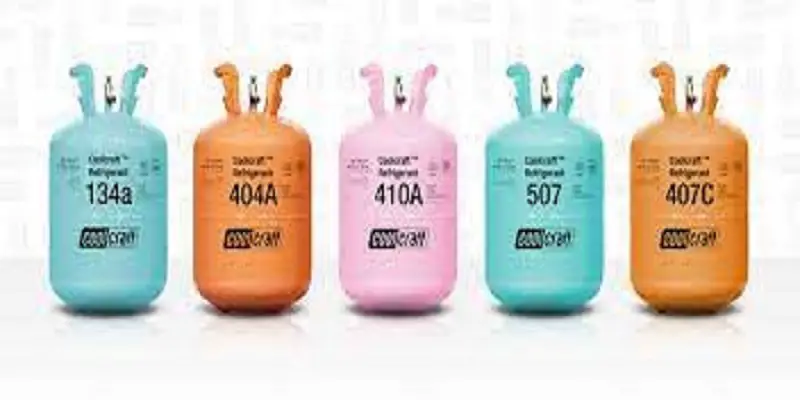Refrigerant classification chart. That’s our topic today, and boy, is it an important one. If you’re in the cooling industry or just a tech enthusiast, you can’t overlook this vital aspect. Whether it’s the air conditioning humming quietly in your room or the refrigerator in your kitchen, it’s the unsung hero – the refrigerant – that does the heavy lifting.

Table of Contents
Understanding Refrigerant Classification
What is Refrigerant?
A refrigerant is like the lifeblood of your cooling system. It’s the magic liquid that cycles through, absorbing heat and leaving cool comfort in its wake. Could we have survived summers without it? Not a chance!
Role of Refrigerants in Cooling Systems
The refrigerant’s task in a cooling system is as simple as a kiddie pool, yet as complex as a chess match. It absorbs heat from the environment, travels in the system, dumps the heat, and restarts the journey. It’s like the Earth revolving around the Sun, never stopping, always moving.
Primary Types of Refrigerants
Refrigerants are a mixed bag, just like chocolates in a candy shop. You’ve got your CFCs, HCFCs, HFCs, and the new kids on the block – HFOs. Each type is unique, and choosing the right one can make all the difference!
The Importance of Refrigerant Classification
Safety Considerations
Ever heard of a refrigerant going rogue? Sounds like a Hollywood flick, right? Well, it’s true. Some refrigerants can be harmful, or even flammable. Knowing your refrigerants and their safety classification helps keep everyone safe.
Environmental Impact
Remember how we used to chill with CFCs until we found out they were partying too hard with the ozone layer? That’s the kind of impact refrigerants can have. We need to know which ones are earth-friendly.
System Compatibility
It’s like a bad romance when a refrigerant doesn’t gel with a system. Compatibility is crucial. Your system’s efficiency and longevity depend on it!
Click here for more articles like this – – Articles on Refrigerants: The Ultimate Guide to Understanding Them
Nomenclature and Classification of Refrigerants
The Numbering System
Meaning of the Numbers
Numbers in refrigerant names are not just there for show. They have meanings. Can you imagine, they tell us about the molecules making up the refrigerant? It’s like knowing the ingredients in your grandma’s secret pie recipe!
Interpreting the Numbering System
But how do you decode this numbering mystery? Fear not! It’s not rocket science. The numbering follows a pattern and once you get it, you’re set. Remember the joy of cracking your first secret code as a kid? It’s just like that.
Classification Based on Chemical Composition
Chlorofluorocarbons (CFCs)
CFCs, the granddaddies of refrigerants. They’ve been around since the 1930s! But after the ozone layer incident, they’ve pretty much retired.
Hydrochlorofluorocarbons (HCFCs)
HCFCs came in as a more ozone-friendly option. But guess what? They still had some ozone depletion potential. So, they’re currently being phased out. It’s like switching from plastic straws to paper ones, better but not perfect.
Hydrofluorocarbons (HFCs)
HFCs are the “It” crowd in the refrigerant world right now. They’re ozone-friendly but still have a few greenhouse issues. It’s like driving an electric car but still relying on coal power.
Hydrofluoroolefins (HFOs)
HFOs are the new kids, promising lower greenhouse impact. Are they the future? Only time will tell.
Detailed Refrigerant Classification Chart
Understanding the Chart
Key Elements of the Chart
There’s a method to the madness in a refrigerant classification chart. It’s packed with useful stuff like refrigerant names, numbers, safety classifications, and more. Once you know what to look for, it’s as handy as a Swiss knife.
How to Use the Chart
Using the chart is like reading a treasure map. Find the refrigerant, look at its properties, compare it with others, and voila! You’ve unlocked a wealth of knowledge.
Chart Displaying Various Refrigerants
CFCs: Specific Types and Uses
Remember R-12, the popular CFC used in cars? That’s the level of detail you’ll find in the chart. Every type, every use, it’s all there!
HCFCs: Specific Types and Uses
Know R-22, the famous HCFC used in HVAC systems? It’s on the chart along with others in its family. It’s like having an entire family tree of refrigerants!
HFCs: Specific Types and Uses
R-134a, anyone? The superstar HFC used in cars? You’ll find it on the chart with all its buddies. It’s like your very own refrigerant encyclopedia!
HFOs: Specific Types and Uses
Keen on the upcoming HFOs like R-1234yf used in cars? It’s all charted out for you. It’s like having a sneak peek into the future!
Conclusion: Navigating Refrigerant Classifications
Recap of Refrigerant Types and Classifications
We’ve come a long way, haven’t we? From understanding what a refrigerant is to decoding the refrigerant classification chart, it’s been quite the ride. Just like a roller coaster, it had its ups and downs but was definitely worth the thrill!
Importance of Correct Refrigerant Selection
The correct refrigerant selection is as crucial as wearing the right shoes for a marathon. It could mean the difference between a purring system and a wheezing one. It’s about efficiency, longevity, and above all, safety and environmental impact.